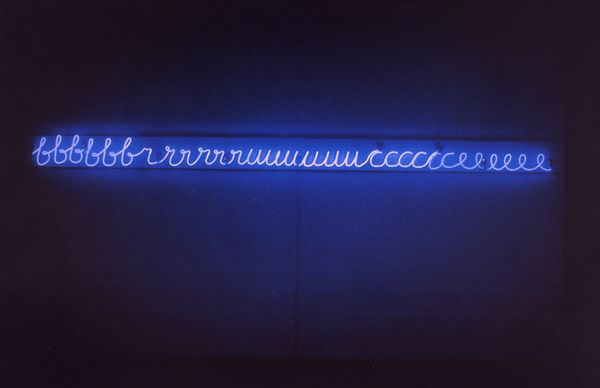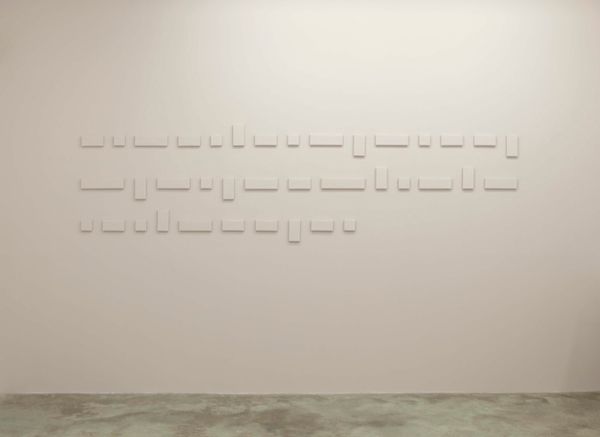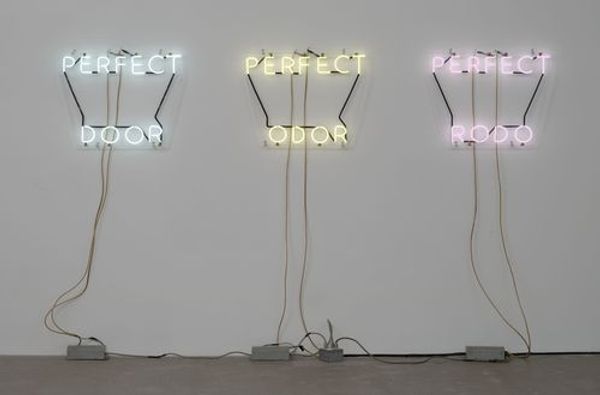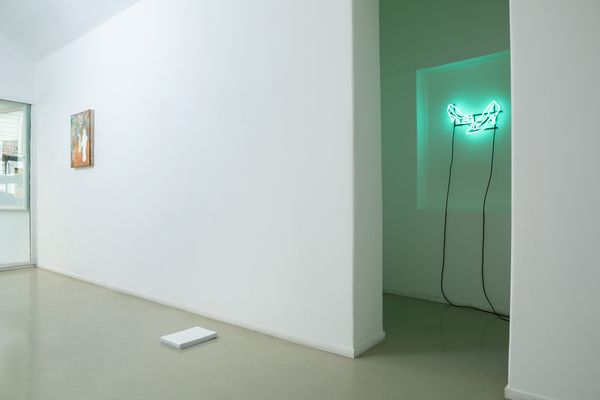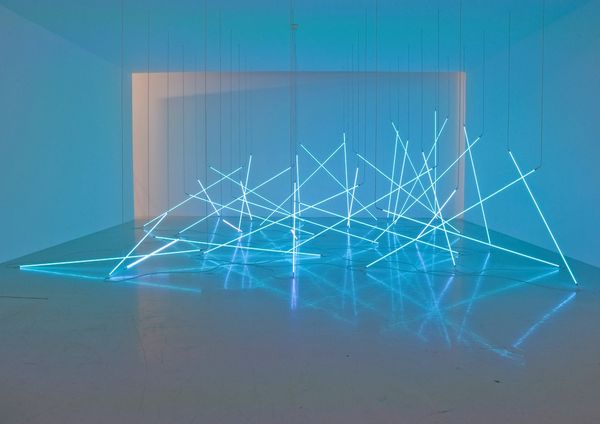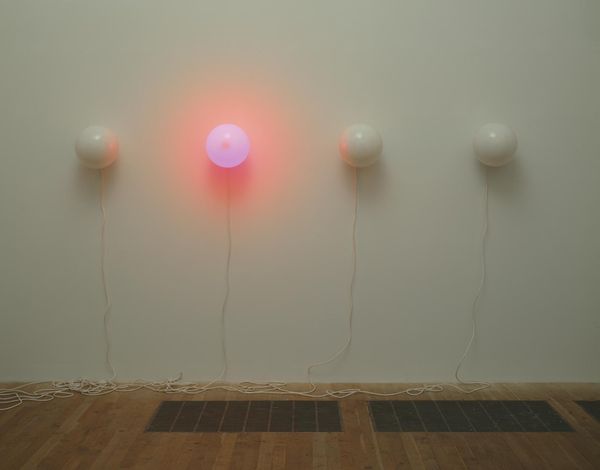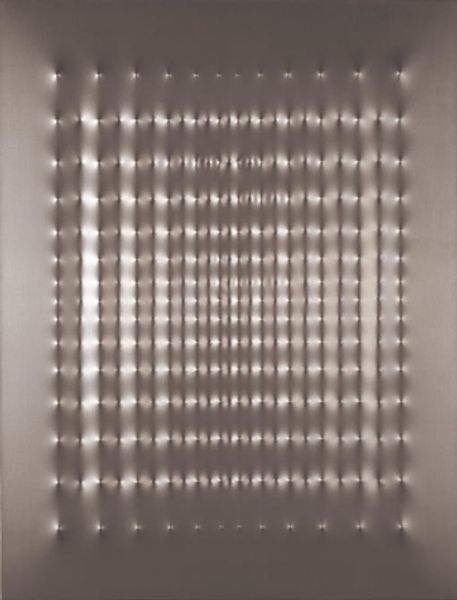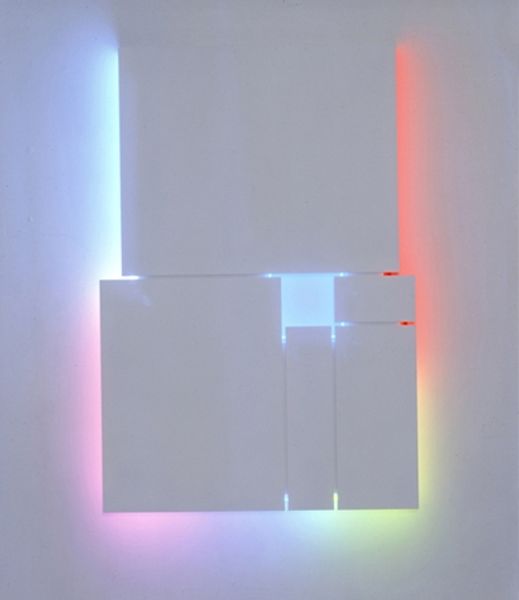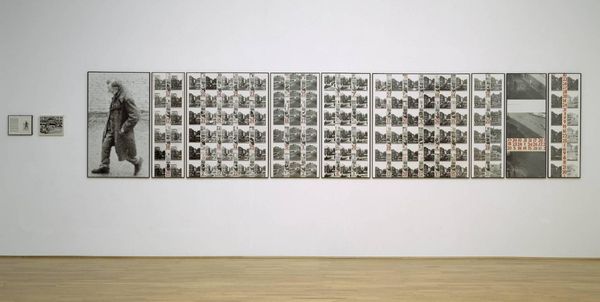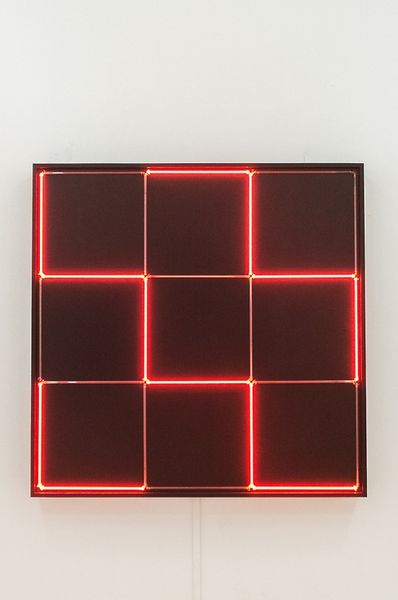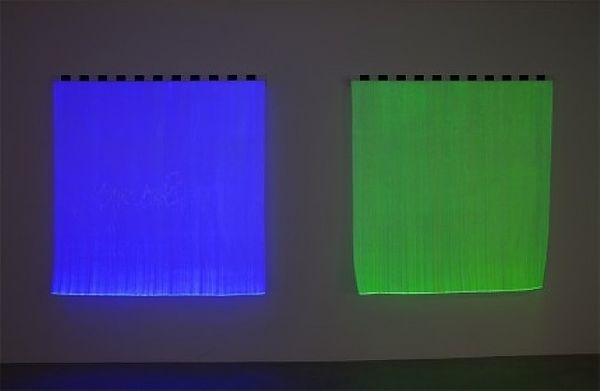
Dimensions: image, each: 260 x 260 mm overall display dimensions variable
Copyright: © Fondazione Merz | CC-BY-NC-ND 4.0 DEED, Photo: Tate
Curator: This work by Mario Merz, held within the Tate Collections, is titled "Untitled (A Real Sum is a Sum of People)". The artist works with photography and neon lighting here. What do you make of it? Editor: It gives me the feeling of a memory slowly being illuminated, or perhaps quantified. There's a clinical coolness to the neon set against those grainy, intimate photographs. Curator: The Fibonacci sequence in neon elegantly contrasts the black and white images below, which seem to depict gatherings or assemblies of people. The photographs, in their repetition, underscore the additive principle echoed by the numbers. Editor: True. And the cool detachment of the neon, for me, hints at how easily individuals can become just numbers in a larger equation. An unsettling beauty. Curator: Indeed, the juxtaposition challenges us to consider the value we place on both the individual and the collective. I am reminded of the semiotics of minimalist work in art. Editor: For me, it speaks to the quiet power held within communal experiences, however anonymous they may seem. A potent piece, really.
Comments
tate 8 months ago
⋮
http://www.tate.org.uk/art/artworks/merz-untitled-a-real-sum-is-a-sum-of-people-t12192
Join the conversation
Join millions of artists and users on Artera today and experience the ultimate creative platform.
tate 8 months ago
⋮
Untitled (A Real Sum is a Sum of People) is a sequence of ten framed silver gelatin photographic prints arranged in a horizontal line beneath a succession of nine blue neon digits. The photographs depict artists and art dealers dining at Ponte delle Gabelle restaurant in Milan. The first nine images have been shot from the same position, but the tenth shows a different part of the restaurant. The sum of diners depicted in each photograph corresponds to the figure in neon directly above each image. These run from left to right, with the number of diners increasing according to the rules of the Fibonacci sequence, which are reflected in the numbers written above them. This mathematical sequence, named after the twelfth-century Italian mathematician who identified it, works by adding together the two previous numbers to arrive at the next. As such, although the first photograph shows an empty room with no neon number written above it, one diner sits alone in both the second and third photographs, two diners in the fourth, and so on, until the tenth image in which thirty-four diners are represented. The neon digits are formed to look like a handwritten script.
